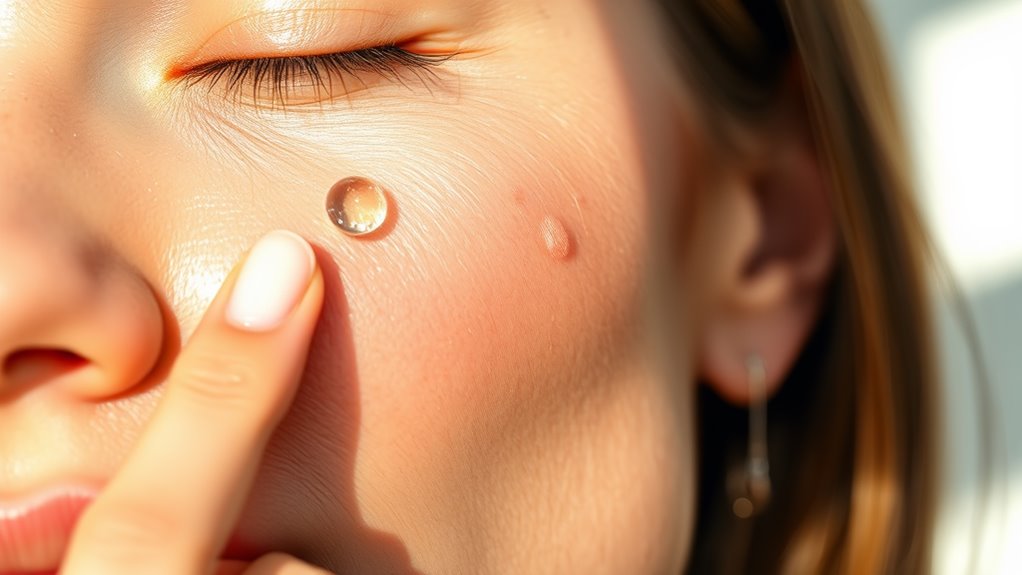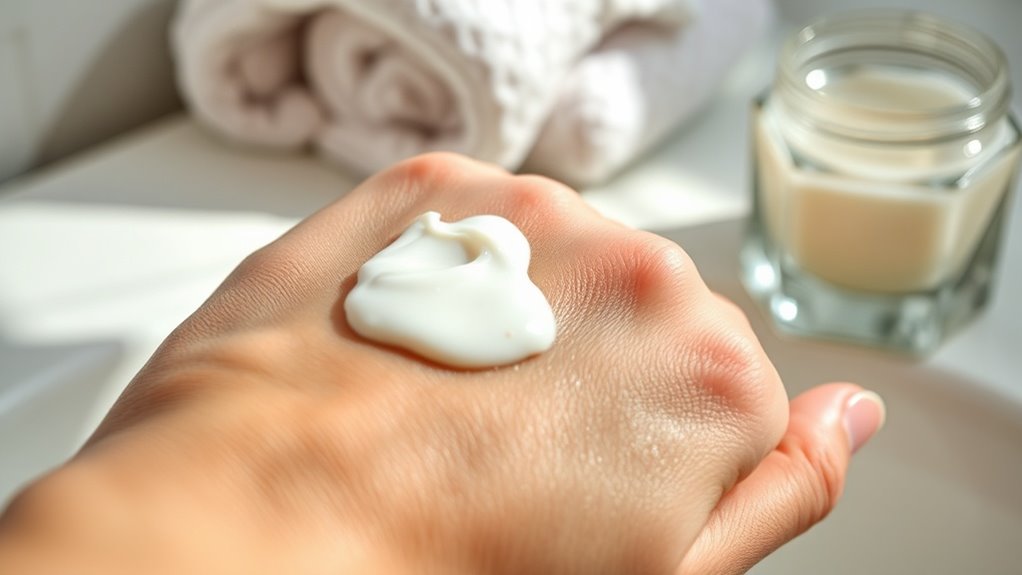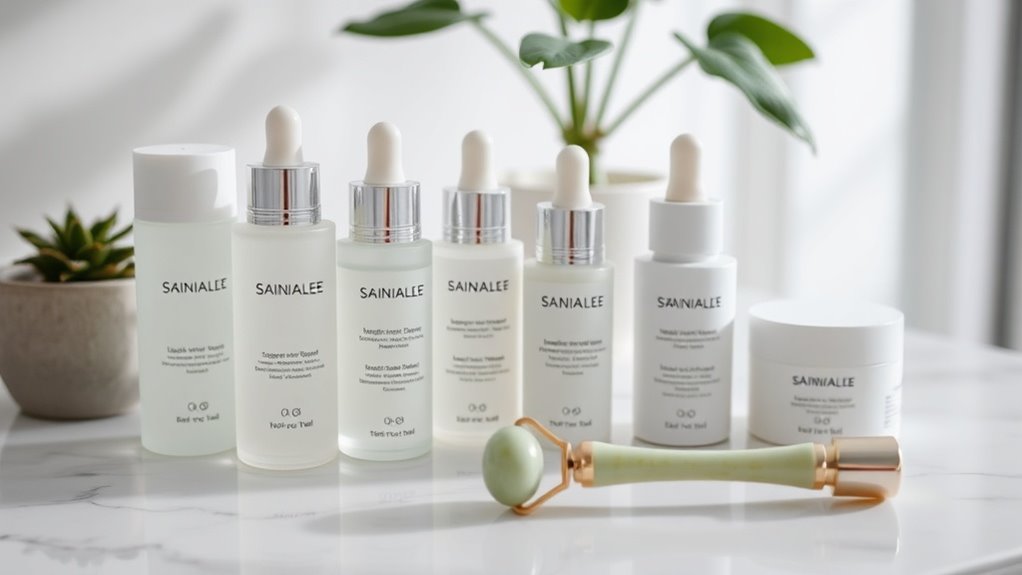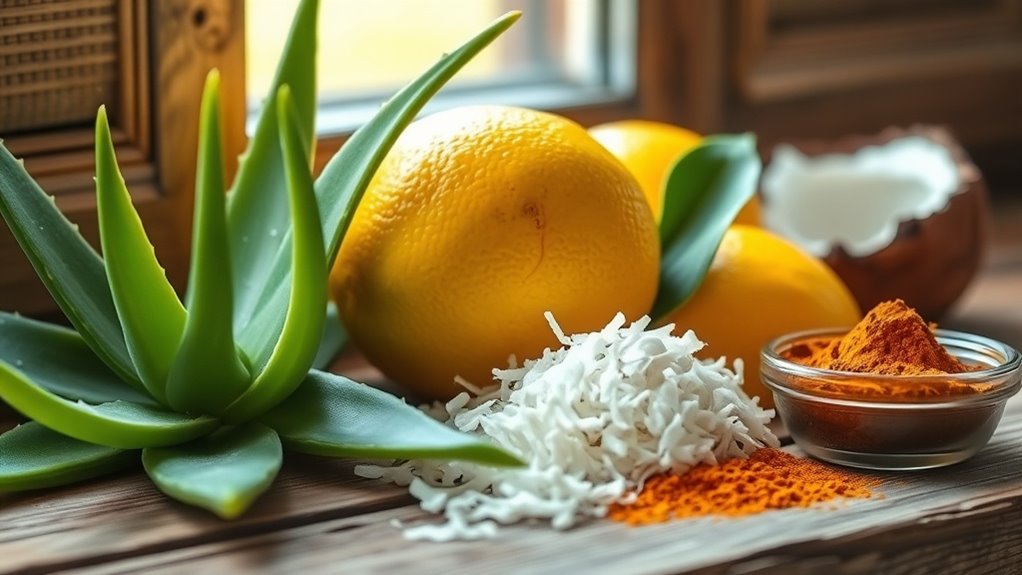Do You Have Dehydrated Skin. Here’s How to Tell!
Do you often notice your skin feeling tight or looking dull? These could be signs of dehydration, and it’s more common than you might think. Recognizing the symptoms is the first step in addressing your skin’s needs. But how do you distinguish between dehydrated skin and dry skin? Let’s explore the key indicators and what you can do to keep your skin balanced and healthy.
Understanding Dehydrated Skin
Have you ever wondered why your skin feels tight or looks dull? You’re not alone; many people experience this, and it often boils down to dehydration.
Understanding dehydrated skin is crucial for maintaining a healthy glow. It’s not just about how much water you drink—environmental factors, skincare habits, and even diet play significant roles. Key signs of dehydrated skin include tightness, flakiness, and a lack of elasticity.
To keep your skin looking vibrant, consider these hydrated skin tips:
First, drink plenty of water throughout the day. It’s amazing how hydration can transform your skin.
Next, use a gentle, hydrating cleanser that doesn’t strip your skin’s natural oils. Incorporate a moisturizer with ingredients like hyaluronic acid to lock in moisture.
Lastly, don’t forget to protect your skin from harsh weather with a good sunscreen.
Key Signs of Dehydrated Skin
Dehydrated skin often sends out clear signals that something’s off. Recognizing these signs can help you take action before it gets worse.
Here are four key indicators to watch for:
-
Tightness: You might feel a constant tightness, especially after cleansing.
-
Flakiness: Notice any rough patches or flaking? That’s your skin crying out for moisture.
-
Dullness: If your skin lacks its usual glow, it’s likely lacking hydration.
-
Increased Sensitivity: You may experience redness or irritation more easily than before.
If any of these resonate with you, trust your instincts. You’re not alone in this; many face the same struggle. Addressing dehydrated skin can lead to a more vibrant, healthy appearance, helping you feel more confident in your skin. Additionally, incorporating effective hydration techniques can significantly improve your skin’s moisture levels.
Differentiating Between Dehydrated and Dry Skin
While both dehydrated and dry skin can feel uncomfortable, it’s important to understand their distinct characteristics. Dehydrated skin lacks water, while dry skin lacks oil.
You might notice that dehydrated skin feels tight and may show fine lines, particularly after washing your face or in dry environments. It can also feel rough or look dull.
On the other hand, dry skin often appears flaky and may be prone to irritation or redness.
To determine which one you’re dealing with, assess how your skin reacts to different products. If a moisturizer feels heavy and greasy without relief, you might’ve dehydrated skin. Conversely, if a lightweight lotion soothes your skin, you may be facing dryness.
Knowing the difference helps you choose the right treatments and connect with others who share similar skin concerns. Embracing your skin’s needs fosters a sense of belonging in a community that understands your journey. Additionally, increasing your daily water intake can significantly transform your skin by addressing dehydration effectively.
Common Causes of Dehydrated Skin
Understanding the common causes of dehydrated skin can help you address the issue effectively. Many factors contribute to this condition, and knowing them can empower you to make better choices for your skin.
Here are four common causes of dehydrated skin:
-
Environmental Factors: Low humidity, harsh winds, and sun exposure can strip moisture from your skin.
-
Hot Showers: While they feel great, long, hot showers can weaken your skin’s natural barrier, leading to dehydration.
-
Inadequate Water Intake: Not drinking enough water can leave your skin thirsty and lacking in hydration.
-
Harsh Skincare Products: Certain cleansers and exfoliants can remove essential oils, leaving your skin dry and dehydrated.
Recognizing these triggers allows you to take proactive steps towards healthier, more hydrated skin. Additionally, it’s important to avoid over-cleansing as it can damage your skin barrier and exacerbate dehydration.
You’re not alone in this journey; many share the same struggles!
Tips for Maintaining Skin Hydration
To keep your skin hydrated, it’s essential to adopt a consistent routine that nurtures its moisture levels.
Start by choosing a gentle cleanser that won’t strip your skin of its natural oils. After cleansing, apply a hydrating serum packed with ingredients like hyaluronic acid to draw moisture in. Follow this with a rich moisturizer that creates a barrier, locking in all that hydration.
Don’t forget to drink plenty of water throughout the day; staying hydrated internally reflects on your skin’s appearance. Incorporating a humidifier in your living space can also help, especially during dry months. Additionally, using products that contain hyaluronic acid can significantly enhance your skin’s moisture retention.
Finally, consider using products with nourishing oils, which can provide additional moisture.
Remember, your skin deserves the best care, and by following these simple steps, you’re not just maintaining hydration—you’re fostering a sense of belonging to a community that values self-care.
Embrace this journey, and your skin will thank you!
Prevention Strategies for Dehydrated Skin
When you prioritize prevention strategies for dehydrated skin, you set the foundation for a healthy complexion.
Embracing simple habits can make a world of difference. Here are four effective strategies to adopt:
-
Stay Hydrated: Drink plenty of water throughout the day to keep your body and skin well-hydrated.
-
Use a Humidifier: Adding moisture to the air in your home, especially during dry seasons, helps prevent skin dehydration.
-
Choose Gentle Cleansers: Opt for sulfate-free, hydrating cleansers that won’t strip your skin of its natural oils.
-
Apply Moisturizer: Lock in hydration by applying a rich moisturizer right after cleansing to seal in moisture. Additionally, consider incorporating layering techniques to maximize hydration throughout the day.





